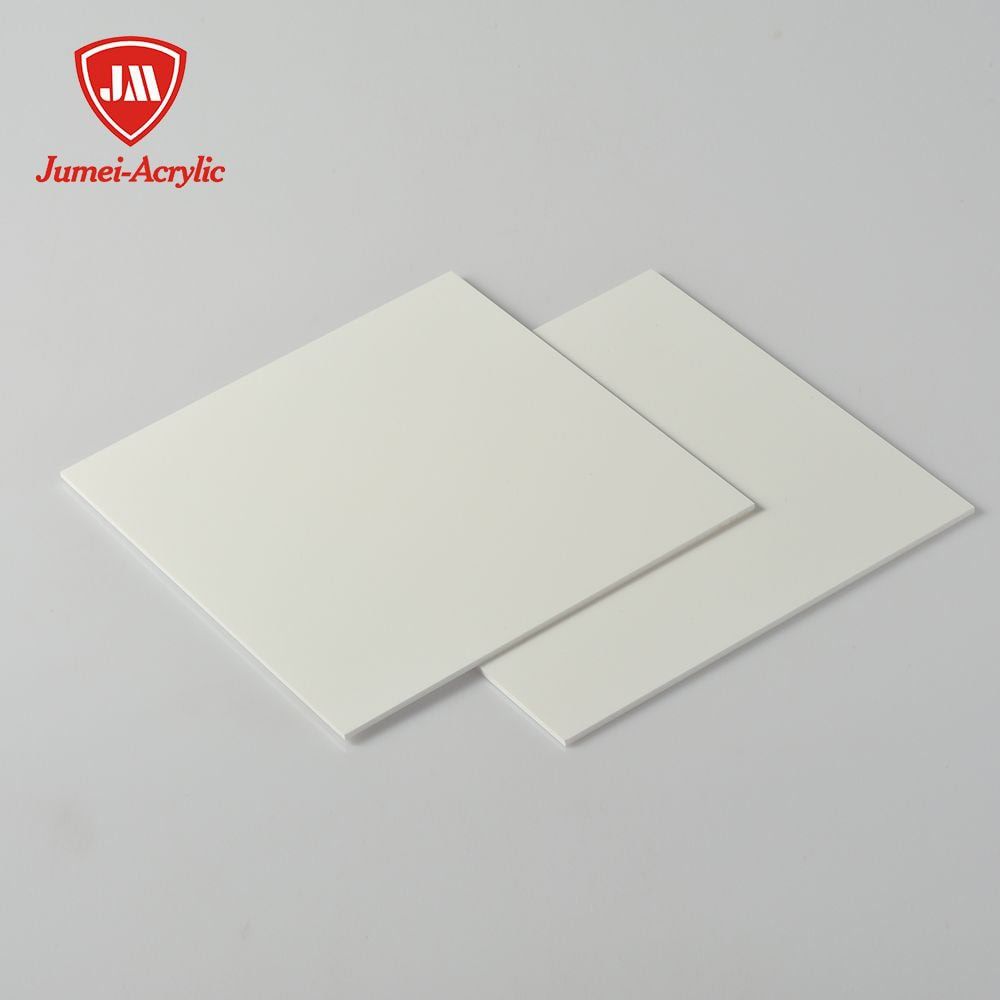Not all applications strictly require hygiene, durability, and clarity together. Regular acrylics harness clarity and durability, whereas sanitary acrylic sheets ensure hygiene, cleanliness, and maintenance.
Understanding the differences between the two acrylic variants helps you make an informed decision. This guide should provide all the crucial details to clarify the distinction between the two.
What Is a Regular/Standard Acrylic Sheet?
A regular acrylic sheet is often referred to as standard acrylic or PMMA sheet. Even brand names like Perspex® or Plexiglas® are synonymous with the material.
Chemical Composition
- Base Polymer: Polymethyl methacrylate (PMMA).
- Monomer: Methyl methacrylate (MMA), derived from petroleum-based sources.
- Structure: Linear thermoplastic polymer with repeating MMA units.
- Additives: UV stabilizers, impact modifiers, colorants, and anti-static agents (optional).
Common Variants
- Cast Acrylic: Made by pouring liquid MMA into molds; offers superior optical clarity.
- Extruded Acrylic: Produced by pushing PMMA through rollers; more cost-effective, less rigid.
- Impact-Modified: Blended with rubbery polymers for added toughness.
- Colored/Translucent: Available in a wide range of hues and light diffusion levels.
- UV-Stable Grades: Enhanced with stabilizers for outdoor durability.
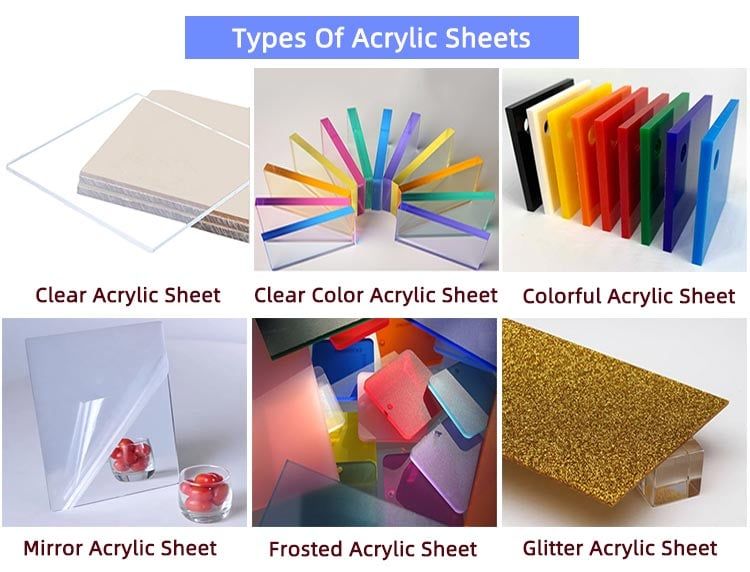
Standard Features
- Transparency: Up to 92% light transmission.
- Density: ~1.18 g/cm³ (about half the weight of glass).
- Hardness: Rockwell M scale ~100.
- Thermal Resistance: Softens at ~100°C; not for high-heat uses.
- Weatherability: Excellent UV resistance in outdoor-grade variants.
- Machinability: Easily cut, drilled, laser-etched, and thermoformed.
General Advantages
- Lightweight: Reduced transportation and installation expenses.
- Impact Resistance: ~17x stronger than glass for safety applications.
- Optical Clarity: Crystal-clear finish suitable for displays and glazing.
- Customizable: Available in various thicknesses, colors, and finishes.
- Weatherproof: UV-stable grades resist yellowing and cracking.
Common Downsides
- Scratch-Prone: Softer surface compared to glass; requires protective coatings.
- Lower Heat Resistance: Not suitable for high-temperature environments.
- Brittle Under Stress: Cracks under sudden impact without modifying solutions.
- Environmental Impact: PMMA production is energy-intensive and petroleum-based.
Standard Applications
- Construction: Skylights, partitions, window glazing, signage.
- Retail + Display: Point-of-sale displays, shelving, product showcases.
- Automotive: Instrument panels, light covers, interior trims.
- Medical: Protective barriers, equipment housings (non-sanitary grade).
- DIY + Crafts: Furniture accents, aquariums, decorative panels.
- Advertising: Illuminated signs, channel letters, outdoor billboards.
The global PMMA market was valued $ at $4.5B in 2023, with millions of metric tons of CO₂ waste during production. This has prompted a shift toward sustainable alternatives to acrylic.
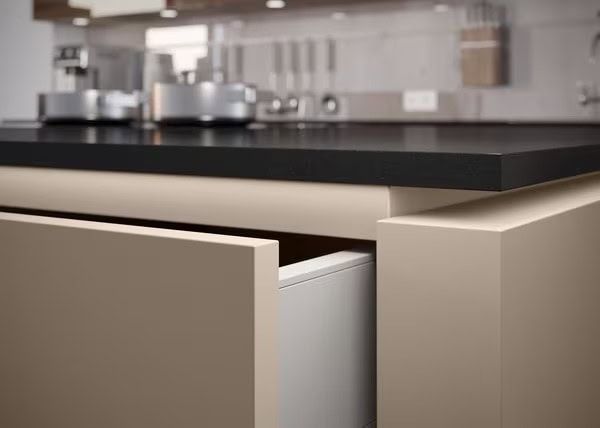
What Is a Sanitary Acrylic Sheet?
Sanitary acrylic sheets are high-performance PMMA-based panels engineered for sterile environments. Unlike standard acrylic, these sheets feature some additional and exclusive properties.
Chemical Composition
Base Polymer: Polymethyl methacrylate (PMMA).
Additives:
- Antimicrobial agents (silver ions or proprietary coatings).
- UV stabilizers for outdoor or high-light environments.
- Impact modifiers for enhanced durability or robustness.
Manufacturing Method: Typically cast acrylic, which yields a smoother, harder surface than extruded variants. This composition ensures a non-porous, glossy, and easy-to-clean surface that resists microbial growth and harsh chemicals.
Common Variants
- Standard Sanitary Grade: Basic antimicrobial and chemical-resistant PMMA sheets.
- Thermoformable Sheets: Designed for tubs, trays, and enclosures at 170°C – 180°C.
- Color-Matched Panels: Available in ceramic and custom colors for aesthetic integration.
- High-Gloss Finishes: Used in visible areas like hospital walls and food prep zones.
Standard Features
- Non-Porous Surface: No moisture prevents bacterial and mold growth.
- Glossy Finish: Enhanced floor aesthetics and cleaning of gaps on tiles.
- Thermal Stability: Thermoformable at 170°C – 180°C; retains shape below 100°C.
- Chemical Resistance: Withstands disinfectants, acids, and cleaning products.
- Compliance: Meets FDA, USDA, and HACCP hygiene standards.
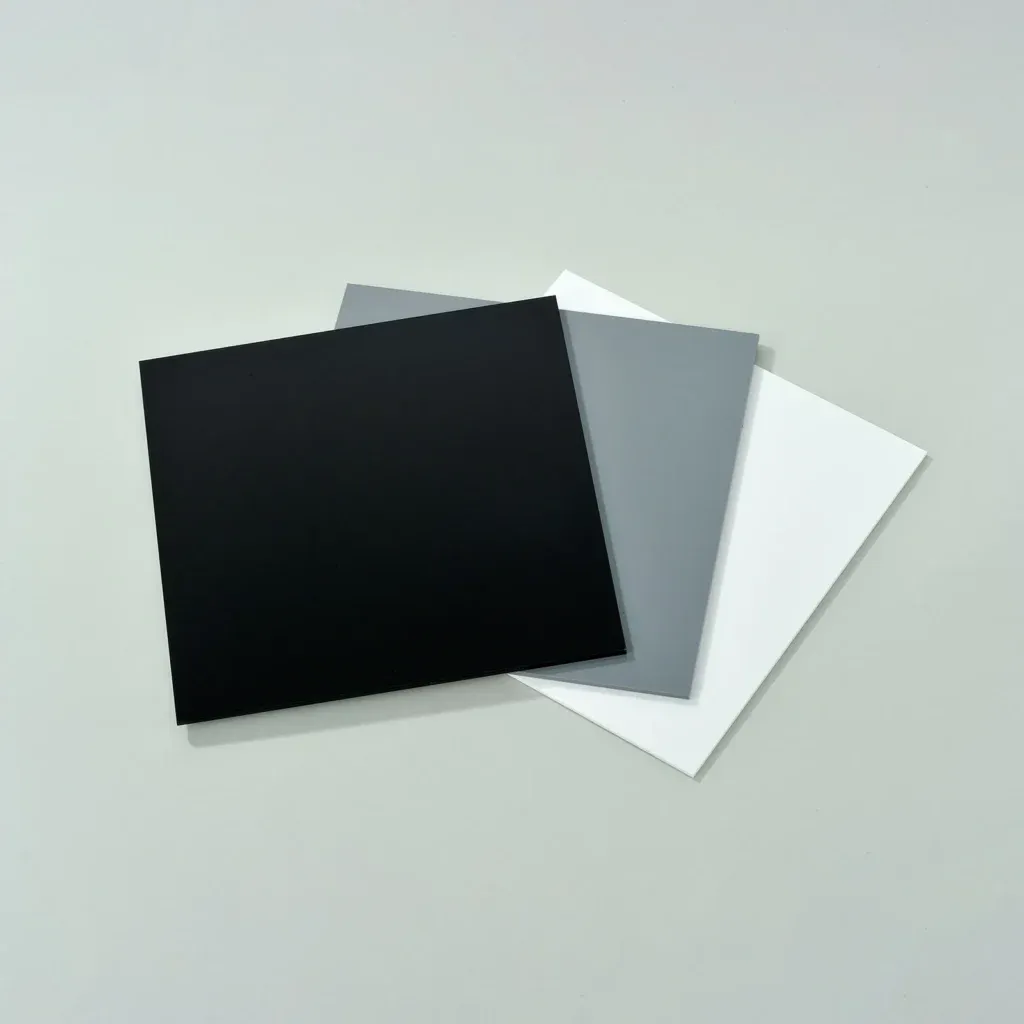
General Advantages
- Superior Hygiene: Ideal for sterile zones against dirt, germs, and stains.
- Durable and Impact-Resistant: Safer than glass in high-traffic areas.
- Low Maintenance: Easy to disinfect through scrubbing to save cleaning costs.
- Customizable: Available in various colors, thicknesses, and finishes.
- Thermoformable: Easily molded into complex shapes for medical and industrial use.
Associated Limitations
- Higher Cost: More expensive than standard acrylic due to specialized additives.
- Limited Heat Resistance: Not suitable for sustained high-temperature exposure.
- Surface Sensitivity: Potential room for scratching without protective coatings.
- Environmental Impact: Petroleum-based; recycling options/spaces are limited.
Common Applications
- Healthcare: Wall cladding, bed panels, countertops, privacy screens.
- Food Processing: Cutting boards, splash guards, prep surfaces.
- Pharmaceuticals: Cleanroom walls, equipment enclosures, lab benches.
- Sanitary Ware: Installed bathtubs, shower trays, sink panels.
- Hospitality: Hygienic partitions, buffet shields, restroom panels.
Sanitary acrylic with grout lines is widely used in hospital ICUs and cleanrooms. Brands supply these sheets as an alternative to the porcelain system for global healthcare infrastructure.
At 170°C – 180°C, sanitary acrylic softens for shaping. For example, a 5 mm sheet requires ~25 minutes in air-circulation ovens to reach optimal forming temperature.
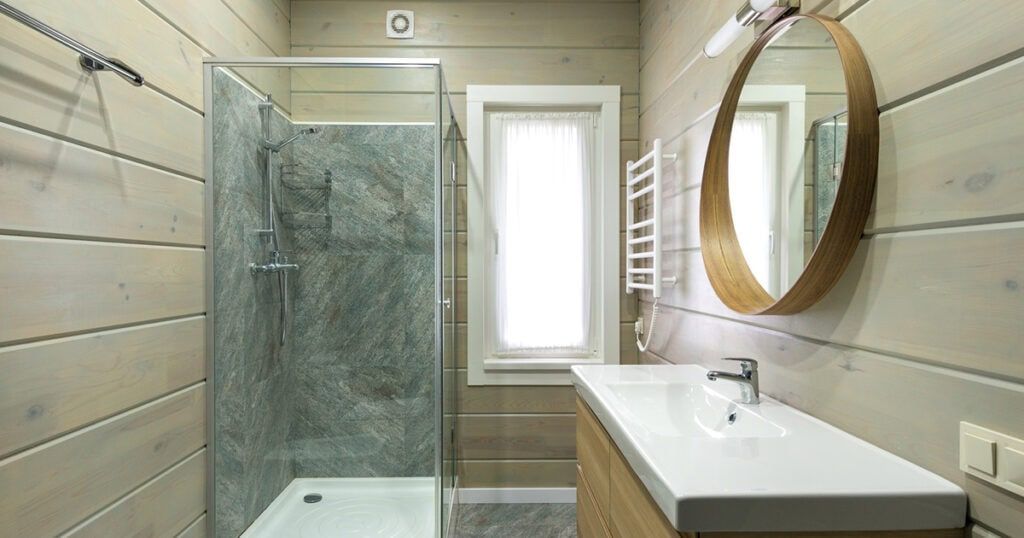
Difference #01: Surface Hygienic (Bathroom)
At the heart of the hygiene debate lies the surface integrity of acrylic. Regular acrylic, while smooth and appealing, is not engineered for sterile environments.
- Their surfaces can develop micro-scratches during machining or daily use. These micro-abrasions become havens for microbial colonies in humid zones.
- Sanitary acrylic is specifically formulated to resist microbial growth across the perimeter. The non-porous, high-gloss surfaces actively eliminate contaminants.
Many sanitary-grade sheets with antimicrobial agents block their ventilation. For instance, silver ions or copper coatings are integrated to inhibit bacterial proliferation.
Chemical Resistance and Cleaning Compatibility
Regular acrylic is sensitive to harsh disinfectants. Alcohol-based cleaners, bleach, and industrial sanitizers can cause clouding, crazing, or surface degradation over time.
- This limits its use in hygiene-critical zones where frequent sterilization is required. Sanitary acrylic, on the other hand, is engineered to withstand repeated exposure to hospital-grade disinfectants.
- It maintains clarity and surface integrity even after hundreds of cleaning cycles. This durability translates into lower maintenance costs and reduced risk of contamination.
Surfaces made from sanitary acrylic showed over 90% reduction in microbial colonies. The result is directly compared to the only 40% – 60% reduction on untreated regular acrylic surfaces.
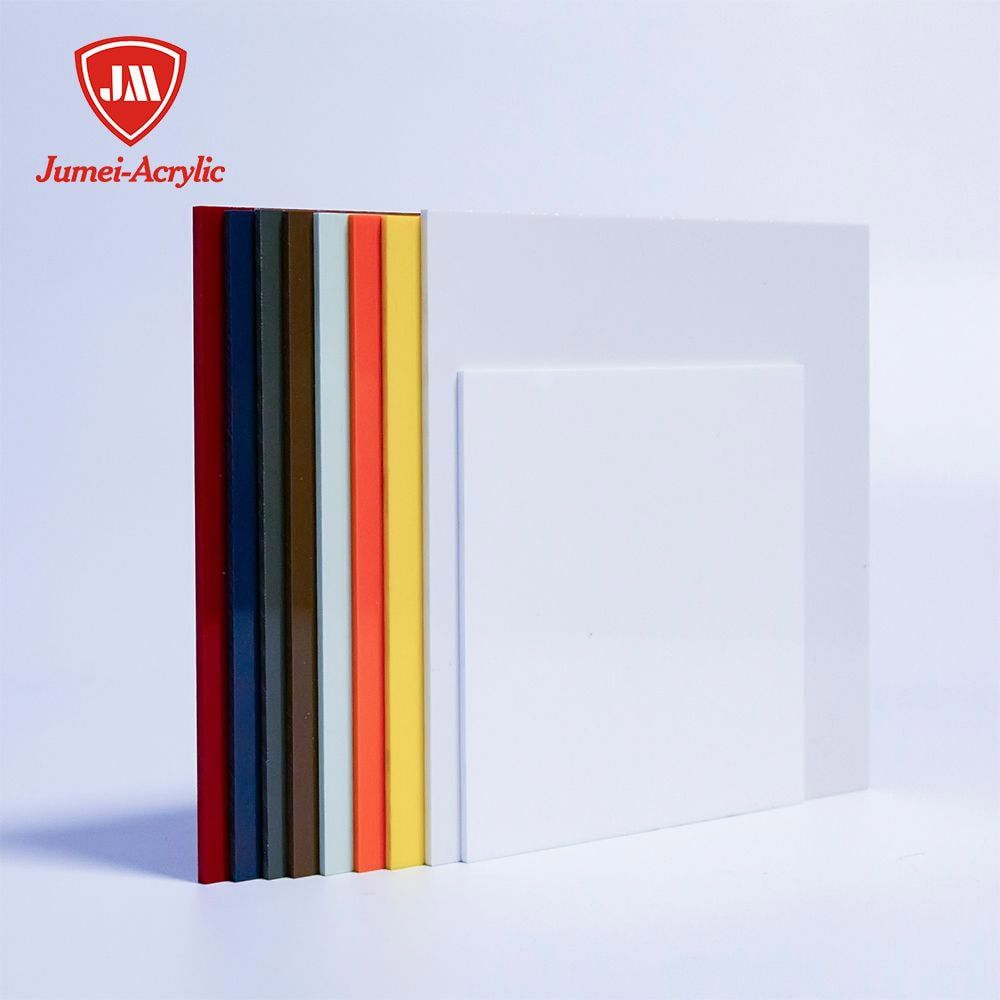
Difference #02: Durability
The durability of acrylics may hide more than resisting wear under the umbrella. It marks long-term performance under mechanical stress, chemical exposure, thermal cycling, and cleaning protocols.
Sanitary and regular acrylics derive from PMMA in reality. However, essential tips or seams, formulation, surface treatment, and intended application cases diverge significantly.
Mechanical Strength + Impact Resistance
Regular acrylic sheets are known for moderate impact resistance, about 17 times stronger than glass. They remain prone to cracking under sudden force, especially in thinner gauges or extruded formats.
- The surface hardness is typically rated around Rockwell M100. It seems sufficient for general use, but it is vulnerable to scratches and dents in high-traffic environments.
- Sanitary acrylic sheets, often cast and reinforced, are engineered for enhanced toughness and durability. Many variants incorporate impact modifiers or are co-extruded with ABS or fiberglass backings.
- These sheets are designed to withstand daily mechanical stress, such as repeated contact in hospital wards or industrial washdowns, without compromising structural integrity.
In a comparative study, sanitary acrylic retained over 95% of its tensile strength after 12 months of continuous use. Meanwhile, regular acrylic showed microfractures and stress whitening in less than 6 months under similar conditions.
Resistance to Scratches and Abrasion
Regular acrylic is inherently soft and prone to scratching. Even minor abrasions can compromise its clarity and create micro-niches for bacterial growth. While protective coatings exist, they add cost and complexity.
- Sanitary acrylic often includes hardcoat finishes or UV-cured top layers that resist abrasion. These coatings not only preserve aesthetics but also extend the sheet’s usable life in demanding environments.
- In healthcare infrastructures, sanitary acrylic is used to make ICU wall panels, privacy screens, and bed surrounds. Facilities report 5 – 7 years of maintenance-free use, with minimal surface degradation and no structural failures.
Conversely, regular acrylic used in signage or decorative panels often requires replacement within 2–3 years due to yellowing, cracking, or surface wear. It’s particularly applicable in outdoor or high-UV environments.
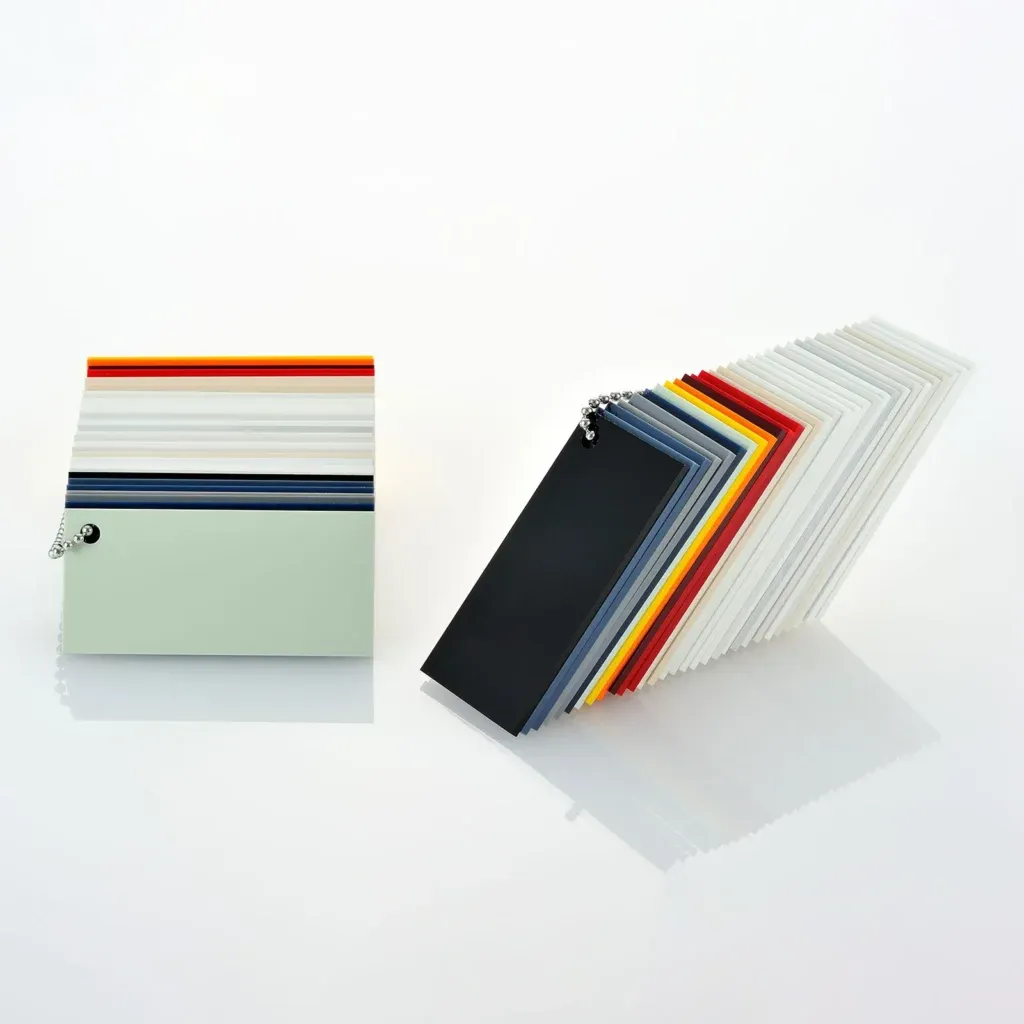
Difference #03: Customization
Customization in acrylic materials refers to their adaptability in terms of form, finish, color, thickness, and fabrication techniques. The customization profiles differ significantly due to intended applications, surface treatments, and compliance requirements.
Fabrication Flexibility
Regular acrylic sheets are widely known for their ease of machining and thermoforming. They can be cut, routed, laser-etched, bent, and bonded using standard tools.
- This makes them ideal for signage, retail displays, furniture accents, and DIY projects. Extruded variants, in particular, offer consistent thickness and are cost-effective for mass production.
- Sanitary acrylic sheets, while also thermoformable, are typically cast acrylic with higher molecular weight and enhanced surface properties.
- They require controlled heating environments—usually between 170°C and 180°C—for shaping into complex forms like bathtubs, shower trays, and medical enclosures.
Their fabrication often involves reinforcement with fiberglass or ABS, which adds complexity but also durability. In a 2023 study, sanitary acrylic sheets demonstrated 98% shape retention.
Color and Finish Options
Regular acrylic offers a vast palette of colors, translucencies, and textures. From frosted panels to mirrored finishes, manufacturers like Plexiglas® and Acrylite® provide hundreds of SKUs.
- Sanitary acrylic, while more limited in aesthetic range, focuses on functional finishes. High-gloss white, ceramic tones, and matte textures dominate the category, chosen for their cleanability and compliance.
- Some suppliers offer color-matched sanitary panels for seamless integration into hospital or food-grade environments, but customization is often constrained by hygiene standards.
For example, in a 2024 hospital renovation in Kuala Lumpur, designers opted for sanitary acrylic panels in RAL 9016 Traffic White, a standard medical-grade color, to ensure visual consistency.
Surface Treatments (Epoxy Grout)
Regular acrylic can be coated with anti-glare, anti-static, or UV-resistant layers depending on the application. These treatments are optional and often added post-production.
- However, they may degrade over time, especially in outdoor or chemically aggressive environments. Sanitary acrylic sheets often come pre-treated with antimicrobial coatings, hardcoat finishes, and chemical-resistant layers.
- These are integral to the sheet’s performance, not just aesthetic enhancements. Customization here is less about visual flair and more about functional optimization to ensure the material meets FDA, HACCP, or ISO 22196 standards.
In food processing, splash guards made from sanitary acrylic must withstand the impact of meat juices, disinfectants, and oils. Customization focuses on edge sealing, rounded corners, and seamless joints.
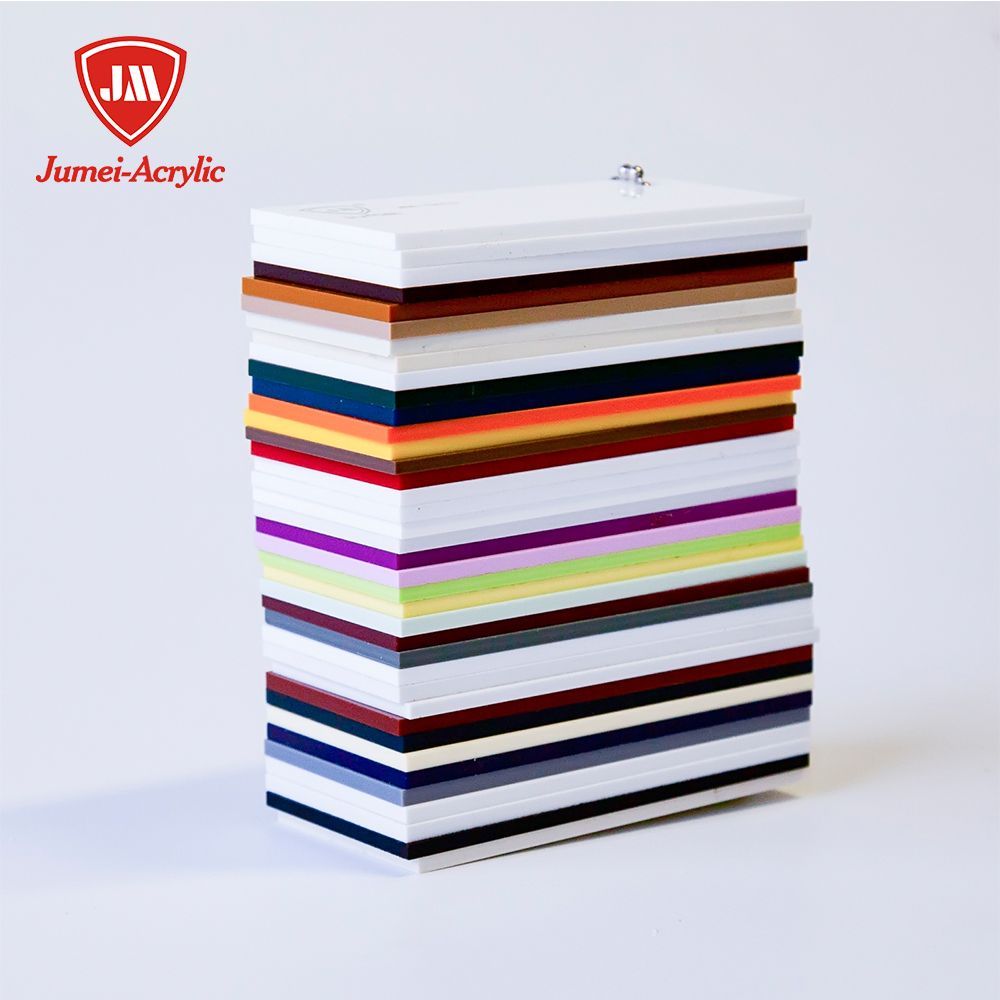
Difference #04: Maintenance
Maintenance for a material means measures about preserving performance, minimizing downtime, and ensuring compliance. Likewise, the maintenance requirements for the two diverge sharply.
Cleaning Protocols and Surface Resilience
Regular acrylic sheets are relatively easy to clean in low-risk environments. A soft cloth and mild soap typically suffice for removing dust and fingerprints.
- However, they are susceptible to harsh chemicals. Alcohol-based cleaners, bleach, and industrial disinfectants can cause crazing, clouding, and surface degradation.
- Over time, even routine cleaning can lead to micro-scratches, which not only dull the surface but also create niches for microbial growth.
- Sanitary acrylic, by contrast, is engineered for frequent and aggressive cleaning cycles. It is designed to withstand hospital-grade disinfectants, including quaternary ammonium compounds, hydrogen peroxide, and peracetic acid.
- These sheets often feature hardcoat finishes or antimicrobial surface treatments, which resist abrasion and chemical attack. In healthcare and food processing zones, this resilience is critical to maintaining hygiene and regulatory compliance.
In a 2023 study conducted by a European sanitaryware manufacturer, sanitary acrylic panels retained 98% of their gloss and surface integrity after 500 cleaning cycles with hospital-grade disinfectants.
Mold, Mildew, and Microbial Resistance
Regular acrylic, while non-porous, is not inherently antimicrobial. In humid environments (kitchens, bathrooms, or food prep zones), it can support the growth of mold and mildew, especially in scratched or poorly sealed areas.
- This necessitates frequent cleaning and occasional replacement to maintain hygiene standards. Sanitary acrylic is specifically formulated to resist microbial colonization.
- Its non-porous surface, combined with antimicrobial additives (silver ions), actively inhibits the growth of bacteria, fungi, and mold. This makes it ideal for sterile environments like hospitals, cleanrooms, and pharmaceutical labs.
Switching from regular to sanitary acrylic panels reduced microbial surface contamination incidents by 68% over six months, while also cutting cleaning labor hours by 30%.
Maintenance Frequency and Lifecycle Costs
Regular acrylic requires more frequent cleaning and inspection in high-touch or high-traffic areas. Scratches, discoloration, and chemical damage often necessitate early replacement.
- It can be as low as 2 – 3 years in demanding environments. This increases both material and labor costs over time. Sanitary acrylic, on the other hand, offers extended maintenance intervals.
- Its durability and chemical resistance allow for daily or shift-based cleaning without degradation. Facilities using sanitary acrylic report 5 – 7 years of maintenance-free performance.
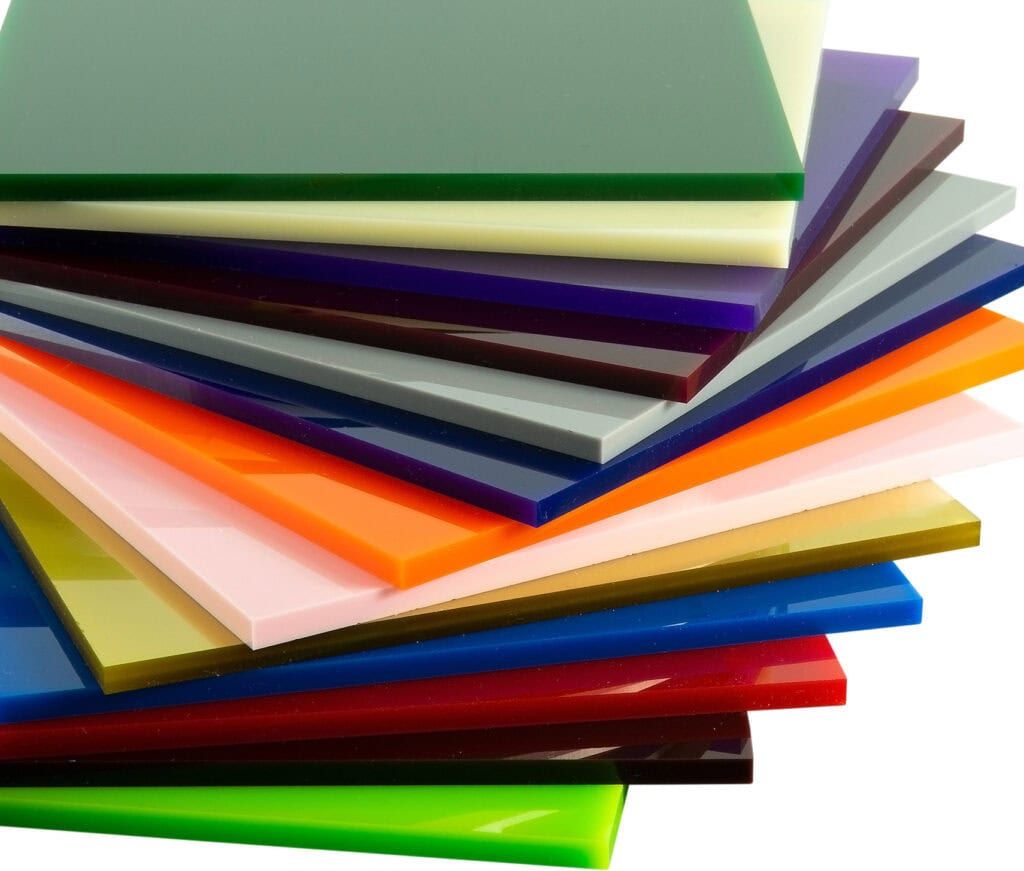
Difference #05: Cost Analysis
When evaluating acrylic materials for an application, cost is often the first metric scrutinized. But the accurate financial picture includes installation, maintenance, compliance, and lifecycle performance.
Upfront Costs (Per Square Foot)
Regular acrylic sheets, especially extruded variants, are widely available and relatively inexpensive. Cast acrylic, which offers better optical clarity and durability, may cost 20–30% more than extruded sheets.
- Sanitary acrylic sheets, however, command a premium due to their specialized formulation. These sheets often include antimicrobial additives, chemical-resistant coatings, and reinforced backings (ABS or fiberglass).
- As a result, sanitary-grade acrylic can cost more per square foot, with molded sanitaryware (shower trays, hospital panels) priced even higher depending on customization and compliance certifications.
Sanitary acrylic bathtubs and enclosures range from $800 to $3,500, depending on size, brand, and features. Regular acrylics for signage or furniture accents may cost as little as $100–$300 per unit.
Installation and Fabrication Costs
Regular acrylic is cheaper. It can be cut, drilled, and bonded using standard tools. However, its lower impact resistance and chemical sensitivity often require protective coatings or frequent replacements.
- Sanitary acrylic is more expensive due to thermoforming requirements and reinforced structure. Still, they provide greater dimensional stability and compliance-ready finishes.
- Regular acrylic may appear more economical at first glance. However, its shorter lifespan, higher maintenance frequency, and limited compliance can inflate total ownership costs.
- Sanitary acrylic, though more expensive upfront, delivers long-term savings, regulatory peace of mind, and operational efficiency in sectors where hygiene and durability are non-negotiable.
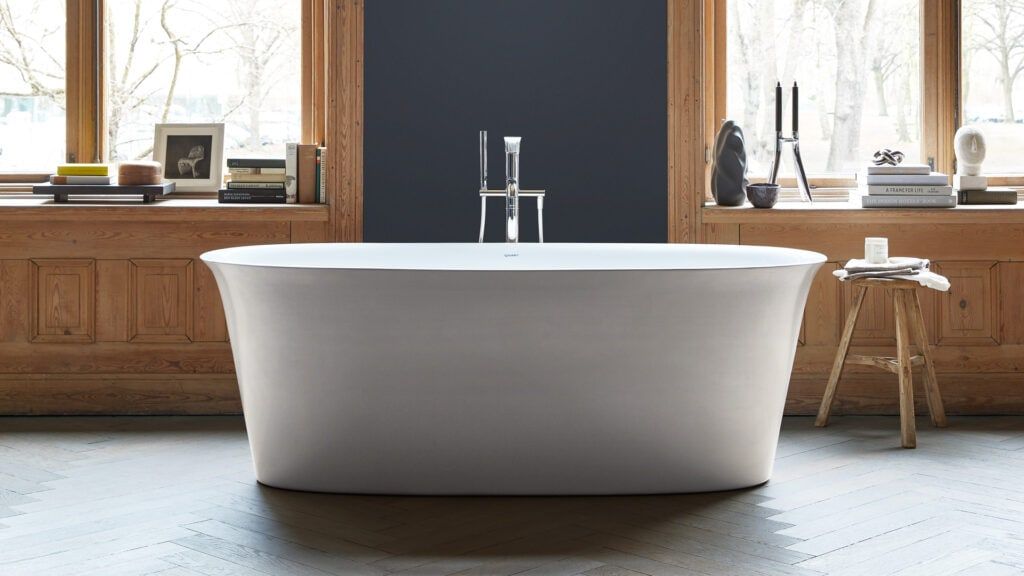
Sanitary vs Regular Acrylic Sheet: Comparison Table
| Category | Sanitary Acrylic Sheet | Regular Acrylic Sheet |
|---|---|---|
| Chemical Composition | PMMA with special additives, finishes, and optional backing | Pure PMMA, extruded or cast without hygiene additives |
| Surface Hygiene | Non-porous, antimicrobial to resist mold and bacteria | Smooth but scratch-prone (no antimicrobial properties) |
| Durability | High impact resistance, abrasion-resistant, and chemically stable in frequent cleaning | Moderate impact resistance; prone to scratching, yellowing, and chemical degradation |
| Cleaning Compatibility | Withstands hospital-grade disinfectants | Sensitive to alcohols and harsh cleaners |
| Customization Options | Molded sanitaryware, seamless panels, color-matched finishes | Wide range of colors, textures, and finishes |
| Compliance Standards | Meets FDA, USDA, ISO 22196, HACCP | May meet general building codes |
| Applications | Hospital ICUs, cleanrooms, food prep zones, bathtubs, shower trays, lab enclosures | Retail displays, signage, furniture accents, partitions, DIY projects |
Conclusion
Acrylic sheets offer versatility, clarity, and performance. The choice between sanitary and regular acrylic is challenging due to their close yet distinct differences in overall specifications. Regular acrylic suffices in decorative or low-risk environments. However, sanitary acrylic is the ultimate option, prioritizing health, safety, and sterility.
Regular or Sanitary – Get the Best Ones from JUMEI
No need to settle for cheap quality acrylics for some mere bucks. Instead, partner with Jumei Acrylic to receive the top-tier acrylic, from sanitary to regular, tailored to meet your project specs. Contact us to connect with our experts, who have been leading the industry for years.

